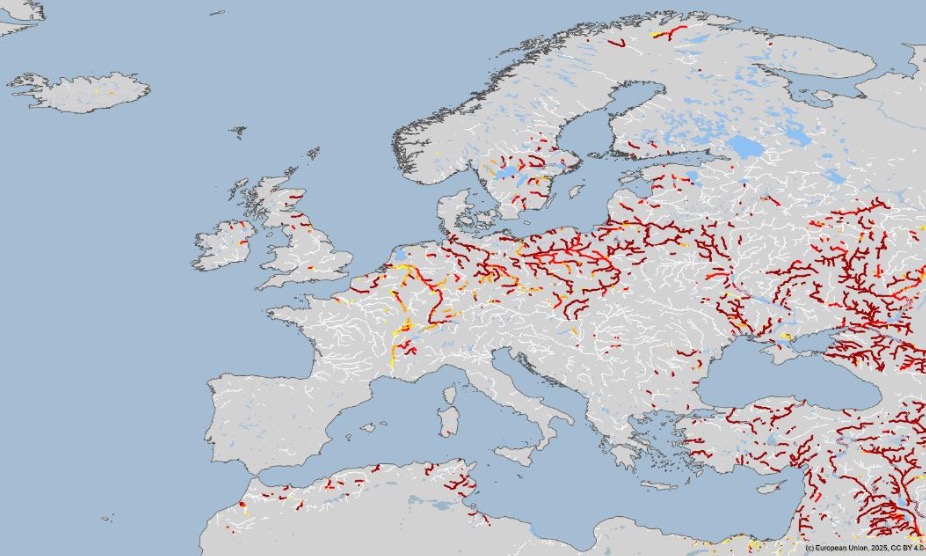A good deal of concern is being raised about the serious drought conditions in Europe that have developed over the first five months of 2025. The The Drought in Europe – April 2025 report, published by the European Commission’s Joint Research Centre (JRC) earlier this month details significant drought conditions across Europe, driven by low precipitation and above-average temperatures since January 2025.
Large parts of central, eastern and southeastern Europe, as well as the eastern Mediterranean and Baltic countries, are experiencing “warning” drought conditions, characterized by low soil moisture and reduced river flows. Similar conditions are emerging in northwestern Europe, including the UK, Ireland, northern Germany, Benelux, and southern Scandinavia.
The Mediterranean region continues under severe “warning” and “alert” drought levels, exacerbated by prolonged lack of rainfall and higher than normal temperatures.
Rivers across eastern Europe, the Baltic Sea region, northern Germany, Benelux, and Turkey show critically low flows, with a potential impact on inland navigation. Notably, the Rhine River at Cologne measured 1.54 meters on April 12, 2025—about half its typical level for the period, disrupting transport and trade. Freight deliveries are still continuing with reduced capacity and loads being divided among more vessels, increasing costs for cargo owners. The Rhine is an important shipping route for commodities including grains, minerals, ores, coal and oil products, including heating oil.


In contrast, Southern Europe, including Spain, Portugal, southern France, and northern Italy, experienced wetter-than-average conditions in April 2025. Spain and Portugal saw substantial rainfall, building on an already wet March, which eased some water restriction concerns. In northern Italy, particularly the Piedmont region, heavy rainfall was forecast, with 100–400 mm expected over a few days, increasing flood risks. Significant precipitation on the southern Alps also triggered landslides in certain areas.
Forecasts in to July, indicate that northern and western Europe, including the UK and Ireland, are expected to see continued drier-than-average conditions, while wetter conditions are forecast for the Iberian Peninsula, central Italy, the eastern Alps, and Greece.
The understanding that climate change is increasing the frequency and intensity of droughts brings in to sharp focus the need for prioritizing resilient infrastructure, water conservation measures, and sustainable resource management to mitigate the potential impact of sustained periods of drought.